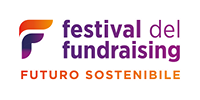Valerio Melandri, direttore di Fund Raising Magazine, ha realizzato questa intervista al guru del direct mailing Mal Marwick.
VM: Grazie Mal per aver accettato questa intervista
MW: Grazie a voi per l’opportunità che mi avete dato di raggiungere anche i miei colleghi italiani.
VM: Dalla tua esperienza come formatore in tanti workshop, anche all’IFC dove recentemente ho potuto ascoltarti, di cosa hanno bisogno secondo te i team, le persone che nelle organizzazioni nonprofit si occupano di raccolta fondi?
MW: Per prima cosa un team che si occupi di raccolta fondi deve condividere una passione per la mission dell’organizzazione. Senza la passione il successo del team è limitato. In pratica, senza condividere una passione, non ci potrebbe neppure essere un team o comunque un team di lavoro efficace e che porta a buoni risultati.
VM:Nel fundraising statunitense quali sono gli strumenti che più di tutti stanno funzionando? Il direct mail? Il faccia a faccia? Il telemarketing?
MW:Il Fundraising negli Stati Uniti ha raggiunto alte modalità di sofisticazione e si è molto diversificato. Le grandi organizzazion nonprofit raccolgono fondi sia da fondazioni che da imprese ma anche dalle persone che fanno grandi donazioni, lasciti o donazioni attraverso lo strumento del direct marketing. Per quanto riguarda il direct marketing devo dire che la maggior parte delle donazioni sono raccolte con il mailing o attraverso il telemarketing. Internet sta crescendo rapidamente ma è ancora una piccola porzione dei 260 milioni di dollari che ogni anno le organizzazioni nonprofit statunitensi raccolgono.
VM:A proposito di Internet come strumento per la raccolta fondi, tu cosa ne pensi?
MW: Internet è e sarà uno strumento molto promettente per chi fa raccolta fondi. Comunque, sin dal 1992, molti osservatori del settore nonprofit proclamavano pubblicamente che email e internet avrebbero messo fine al direct mail e che tutti avrebbero presto scelto di donare online perchè era più semplice e costava meno alle organizzazioni nonprofit. Queste profezie non si sono ancora avverate.
I più entusiasti dicono che il fundraising online è responsabile del 2% della raccolta fondi delle organizzazioni nonprofit negli USA nel 2006, altri, fra cui io, crediamo che sia meno della metà di quanto dicono. Gli Americani inoltre stanno rapidamente abituandosi ad usare la carta di credito anche online e questo aiuterà sicuramente il trend di crescita del fundraising online.
VM: La competizione fra le organizzazioni nonprofit può dare un impulso al fund raising oppure peggiora solamente la situazione?
MW: La competizione è un’arma a doppio taglio. E’ un incentivo per le organizzazioni nonprofit per imparare le tecniche di raccolta fondi e raffinarne altre. La competizione fa capire come le organizzazioni nonprofit hanno bisogno di comunicare regolarmente e chiaramente con i donatori. Allo stesso tempo però la competizione ha a volte un risvolto negativo. In alcuni sottosettori del nonprofit c’è una così alta competizione che i fundraiser rifutano di condividere informazioni con i loro colleghi perchè hanno paura di “perdere” i donatori se lo fanno. E’ una cosa molto triste.
VM:Cosa vedi nel futuro del fund raising?
MW: Io vedo un futuro positivo per il fundraising in tutto il mondo. Oggi in molti paesi lo sviluppo della società civile è fortemente ostacolto, come ad esempio in Cina e Russia.
Comunque il settore nonprofit sta crescendo sempre di più in tutto il mondo ogni anno che passa e sono milioni le organizzazioni nonprofit che aiutano le propria comunità in ogni parte del mondo. Organizzazioni come Resource Alliance (www.resource-alliance.org) ed anche altre dedicano le loro abilità e le loro conoscenze, come fundraiser, per far crescere rapidamente il settore del fund raising.
E’ difficile immaginare il futuro del mondo senza organizzazioni nonprofit che crescano con l’aiuto dei fundraiser e che abbiano un ruolo importante nel rispondere ai bisogni più urgenti e ai cambiamenti più importanti che deve affrontare l’umanità intera.
Se vuoi leggere la versione inglese dell’intervista vai avanti:
VM:From your experience of professor in many workshop, which is the main need of the fundraising team in the nonprofit organisation?
MW: Above all else, a fundraising team must share a passion for its organization’s mission. Without passion, the team’s success will be limited. In fact, without a shared passion, there may be no team – or, at least, no effective teamwork.
VM: What are the most functional fundraising tools in USA: direct mail? face to face? telemarketing?
MW: Fundraising in the United States is, at its best, highly sophisticated and highly diversified. Large, well-established nonprofit organizations typically raise money through a wide variety of means, including both institutional (foundations and corporations) and individual (major gifts, legacies, and direct marketing). Insofar as direct marketing is concerned, almost all the money is raised either by mail or by telephone. Internet fundraising, while growing rapidly, still accounts for only a tiny portion of the $260 billion dollars raised annually by U.S. nonprofits.
VM: What do you think about the relationship between the Internet and fundraising?
MW:The Internet holds great promise as a fundraising tool. However, as long ago as 1992, observers of the nonprofit sector were proclaiming publicly that email and the Internet would put an end to direct mail – that everyone would clearly choose to give online, because it’s so simple to do and costs to little for the nonprofit. Those predictions have not come to pass. The most enthusiastic proponents of online fundraising claim they accounted for about two percent of the funds raised last year. (Others, myself included, think it’s less than half that much.) However, Americans are steadily growing more comfortable using their credit cards online, and this will help continue the growth trend in online fundraising.
VM:The competition between nonprofit organisations can make for better or worse fund raising?
MW: Competition is a double-edged sword. Clearly, it provides incentives for nonprofits to learn new fundraising techniques and refine the old ones. It helps convince them that they need to communicate regularly and clearly with their donors. However, competition also has a negative effect, at times. In some subsectors of the nonprofit field, there are such intense feelings of competition that fundraisers refuse to share information with their colleagues, because they fear they’ll “lose” their donors if they do so. I find this sad.
VM: What do you see in the future of fundraising?
MW:I see a bright future for fundraising all across the globe. Today, there are many countries that discourage or even suppress the development of civil society organizations, China and Russia the most prominent among them. On a global scale, however, the nonprofit sector has established itself more and more securely with every passing year. Millions of nonprofits are serving the needs of their communities on every continent. Through the efforts of the Resource Alliance (www.resource-alliance.org) and other dedicated organizations, the skills and knowledge of fundraisers are developing at a rapid pace, too. It’s hard to imagine a future world in which nonprofit organizations, supported by professional fundraisers, don’t play a major role in addressing humanity’s most pressing challenges.

